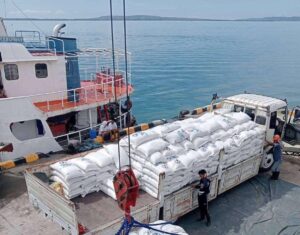
The Philippines experienced a significant decline in foreign investment pledges during the first quarter of 2024, according to the Philippine Statistics Authority (PSA). The total foreign investment commitments fell by 63.6%, reaching only P148.43 billion compared to P408.22 billion in the same period in 2023.
Investment Agency Contributions
The foreign investments were primarily secured by the Board of Investments (BOI), Clark Development Corporation (CDC), Cagayan Economic Zone Authority (CEZA), Philippine Economic Zone Authority (PEZA), and Subic Bay Metropolitan Authority (SBMA). However, several agencies reported no foreign investment approvals for the quarter, including:
- Authority of the Freeport Area of Bataan (AFAB)
- Bases Conversion and Development Authority (BCDA)
- BOI-Bangsamoro Autonomous Region in Muslim Mindanao (BOI-BARMM)
- Clark International Airport Corporation (CIAC)
- John Hay Management Corporation (JHMC)
- Poro Point Management Corporation (PPMC)
- Tourism Infrastructure and Enterprise Zone Authority (TIEZA)
- Zamboanga City Special Economic Zone Authority (ZCSEZA)
Major Sources of Investment
Among the countries contributing to the foreign investments, Singapore emerged as the top source with P70.06 billion in pledges, accounting for 47.2% of the total. The Netherlands followed with P38.89 billion (26.2%), and South Korea with P20.23 billion (13.6%).
Sectoral Distribution of Investments
The electricity, gas, steam, and air conditioning supply industry attracted the largest share of investments, totaling P109.19 billion, which represents 73.6% of the overall foreign investment commitments. The accommodation and food service activities sector received P20.09 billion (13.5%), while the manufacturing sector secured P12.62 billion (8.5%).
Regional Distribution of Investments
The CALABARZON region received the most significant portion of the pledged foreign investments, amounting to P117.39 billion or 79.1% of the total. Central Luzon followed with P23.83 billion (16.1%), and the Bicol Region with P2.86 billion (1.9%).
Combined Investment Commitments
The total approved investment commitments from both foreign and Filipino nationals amounted to P309.45 billion, marking a decrease of 35.6% from P480.48 billion in the previous year. Filipino investments contributed P161.03 billion, representing 52% of the total.
Employment Generation
Despite the decline in investment commitments, the PSA reported an increase in expected employment. The total approved investments for the first quarter of 2024 are anticipated to generate 27,711 jobs, an 8.8% increase from the 25,470 jobs expected in the same period of the previous year. Out of these, foreign investment projects are expected to create 23,378 jobs.
Economic Implications
Rizal Commercial Banking Corp. chief economist Michael Ricafort attributed the decline in foreign investments to the high base effect from significant investment pledges in the previous year, particularly in the renewable power sector.
The substantial drop in foreign investment commitments poses challenges for the Philippine economy, which relies on these investments for economic growth, technological advancement, and job creation. The government may need to reassess its investment promotion strategies and address any barriers that might be discouraging foreign investors.
Conclusion
The sharp decline in foreign investment commitments in the first quarter of 2024 underscores the need for the Philippines to enhance its investment climate. With strategic adjustments and targeted efforts to attract foreign investors, the country can potentially reverse this trend and achieve sustainable economic growth.






















Comments are closed for this article!